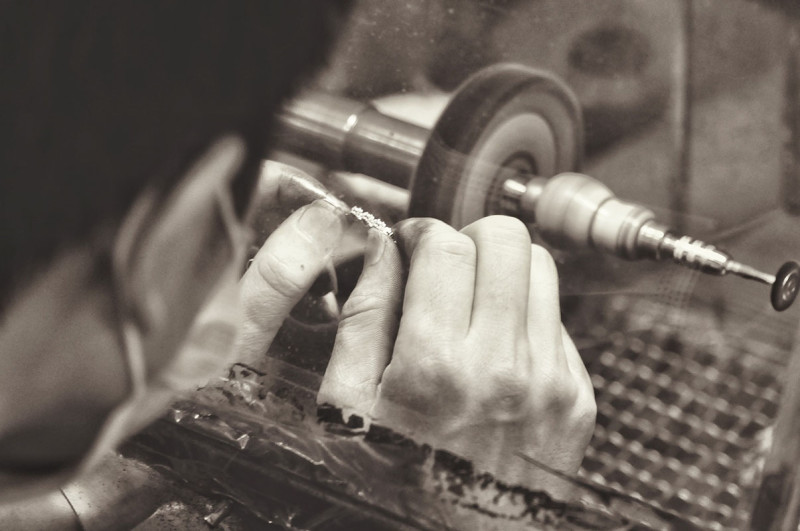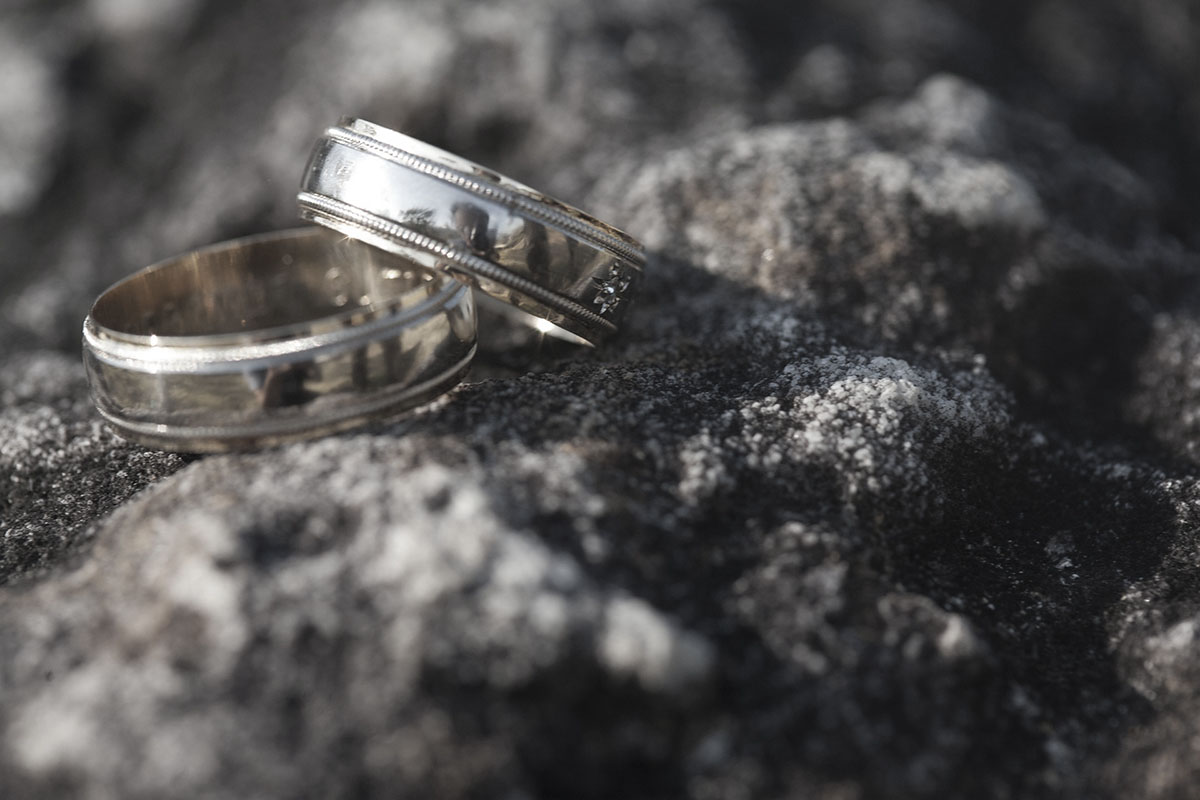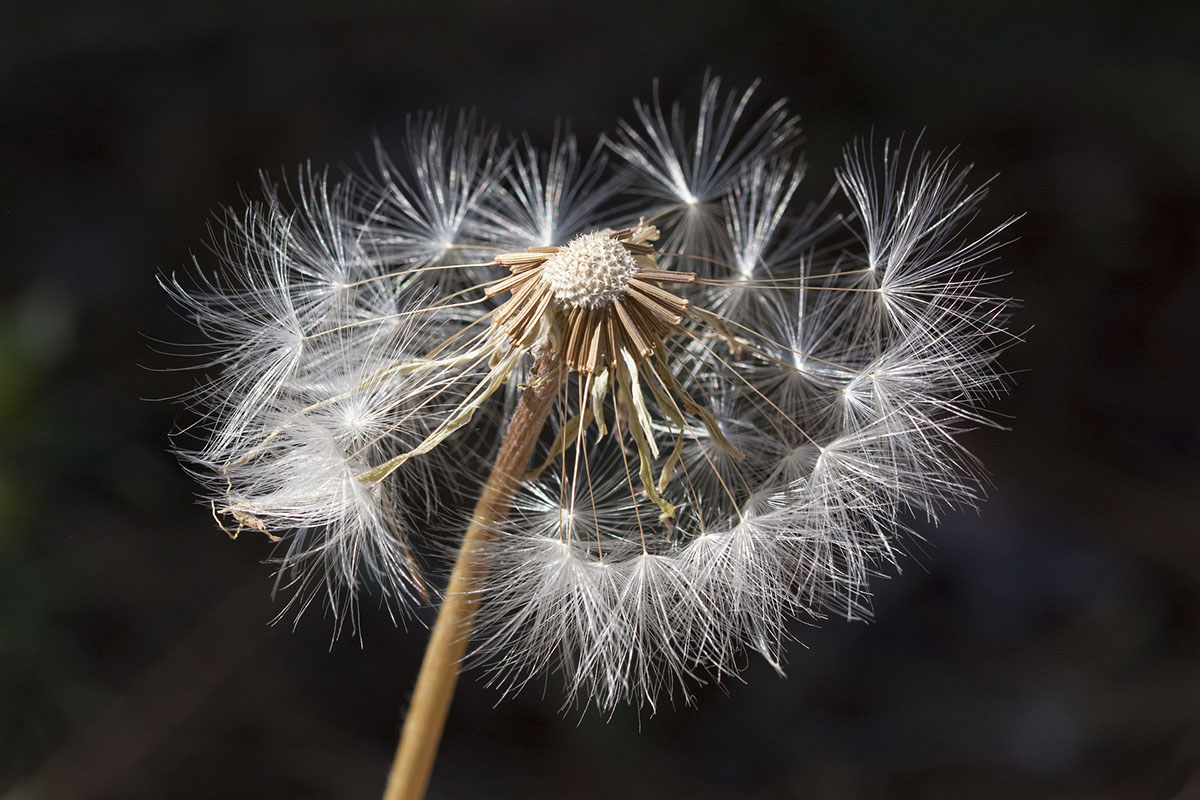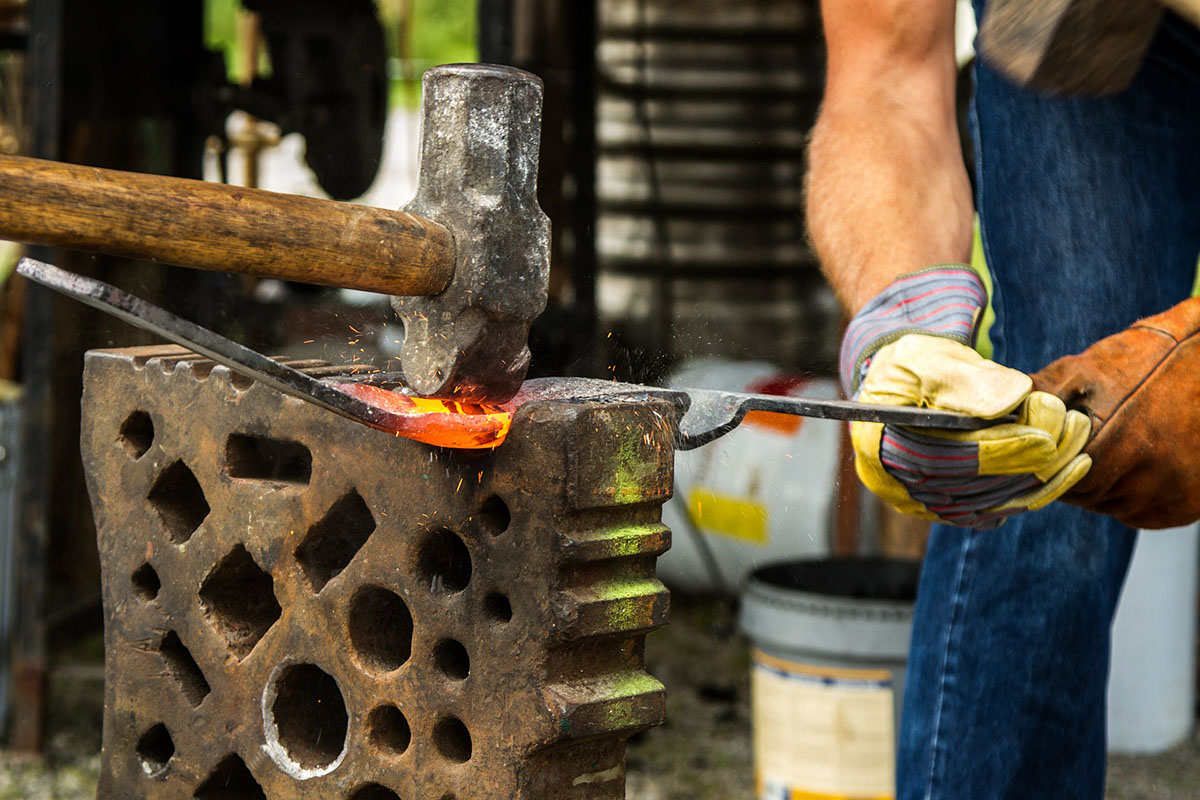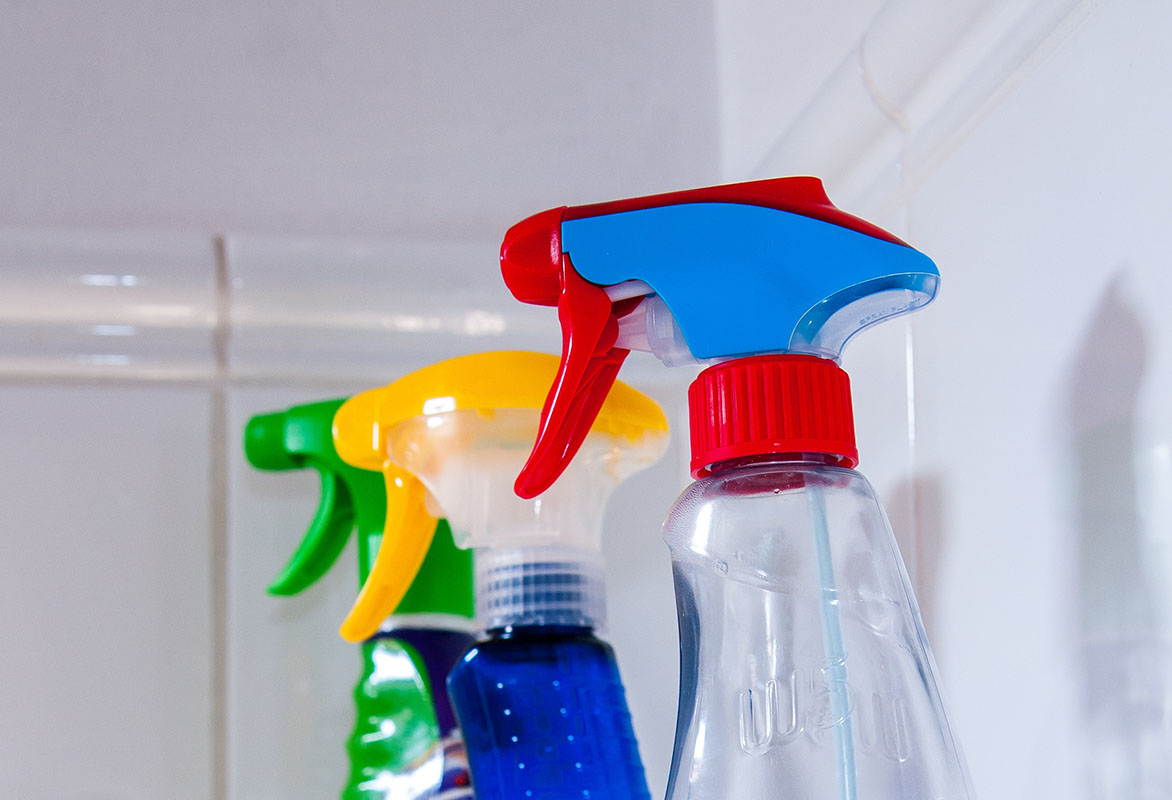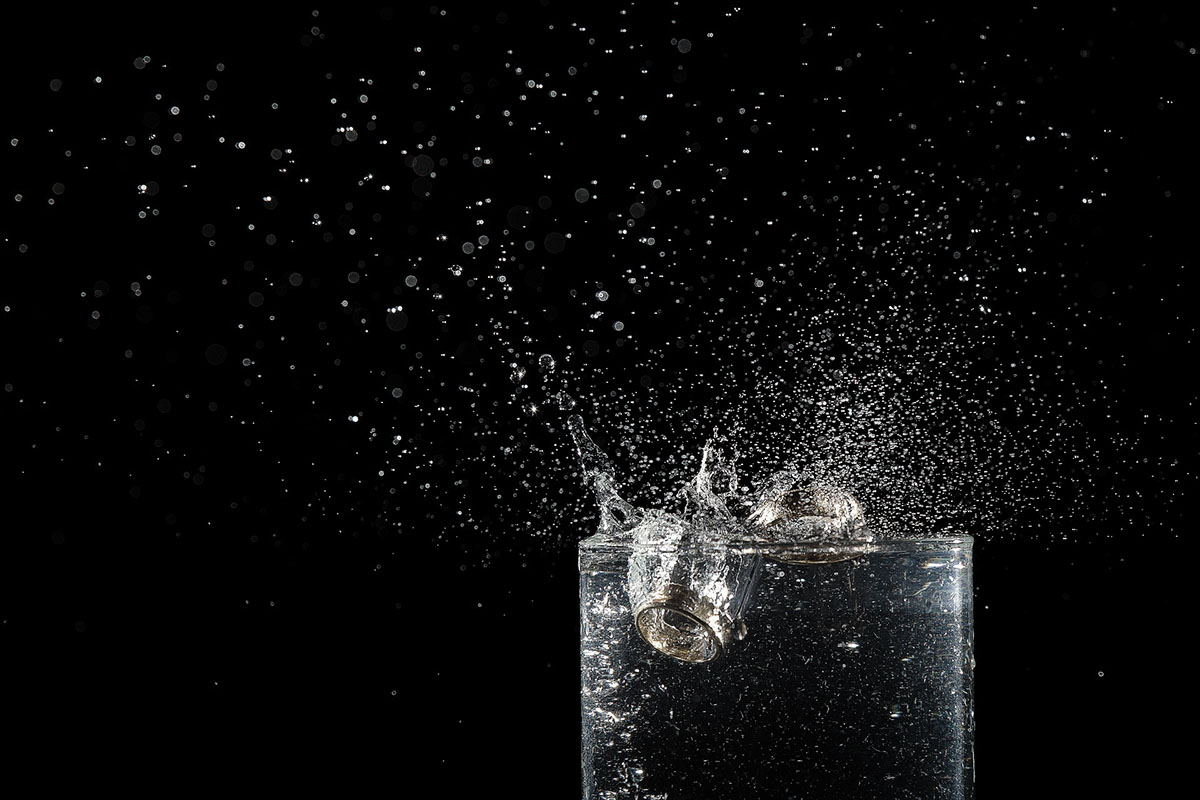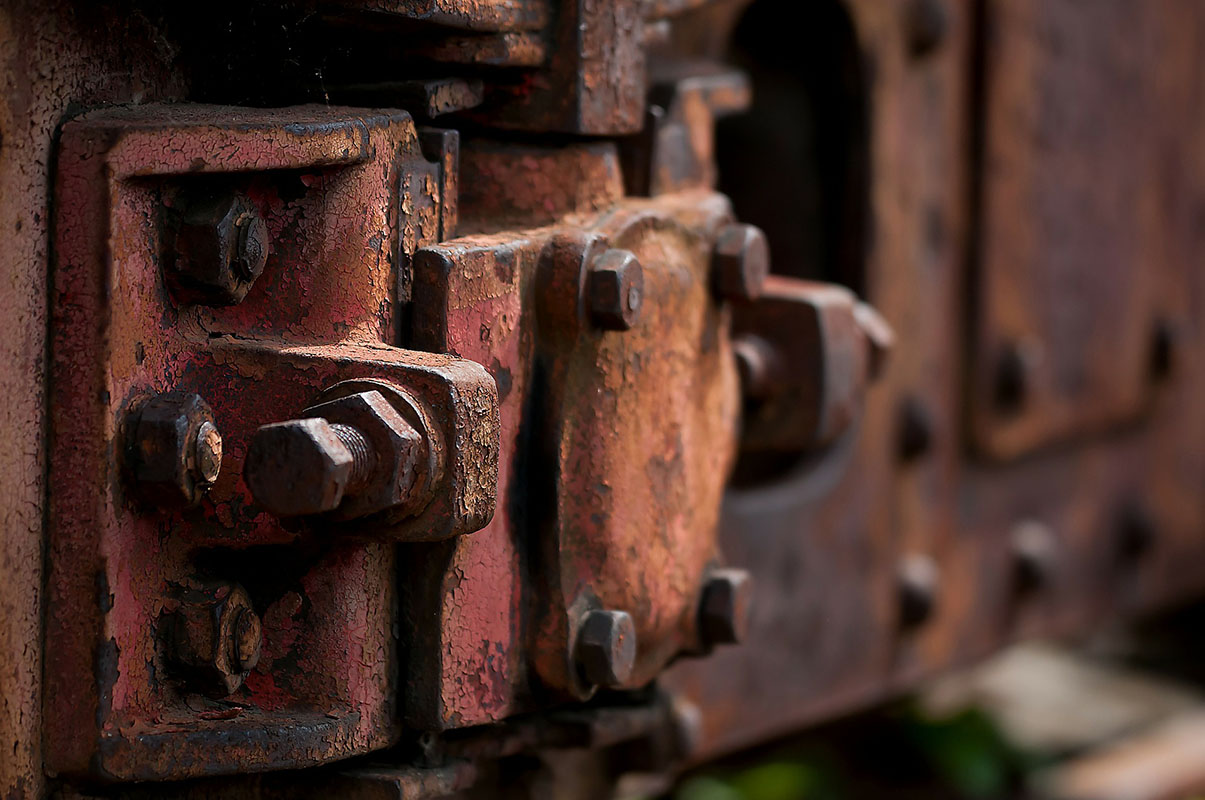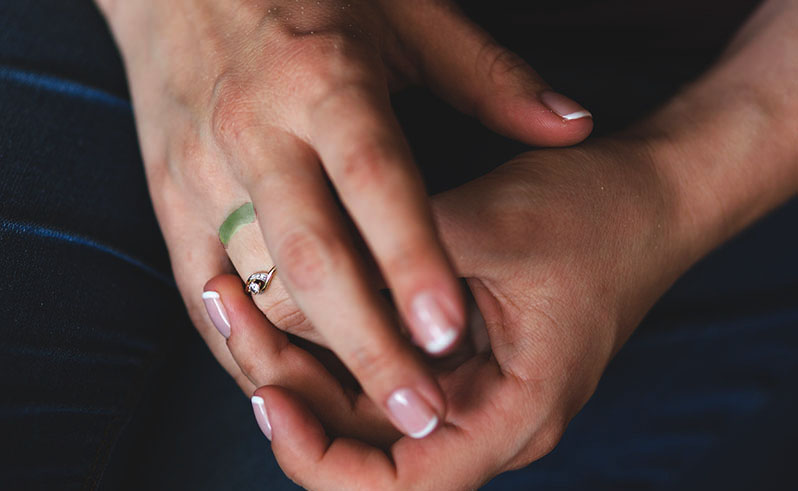Titanium is a durable, affordable and beautiful metal making it a great option for jewelry. As a fairly new commodity in the jewelry industry, titanium has been creating great waves. Since its introduction in the 1990s, the use and demand for the metal has only increased.
Unfortunately for many, the word “titanium” can mean strange or mysterious. To dispel those associations and create a better understanding of the metal as a whole, we’ve created the ultimate guide to titanium rings including a myth busters section and common questions.
Without further ado, let’s get into titanium!
CONTENTS:
I. What are some myths about titanium
III. Is titanium a hypoallergenic metal?
IV. Is titanium a metal or an alloy?
V. How durable is a titanium ring?
VI. Is titanium considered a precious metal?
VIII. What are the differences and similarities between tungsten and titanium?
IX. What are the advantages and disadvantages of buying titanium jewelry?
X. How do you clean a titanium ring?
XI. Can you get a titanium ring wet?
XII. Do titanium rings rust or tarnish?
XIII. Will a titanium ring turn your finger green?
I. What are some myths about titanium
- Titanium rings cannot be resized.
This is partly false. Most titanium rings can be made bigger, especially those of commercial grade 2 pure titanium, but an existing ring can not be made smaller. Simply take the ring to a certified titanium manufacturer to have the bore or inside skimmed out for a looser fit. The real problem that comes with resizing is if the titanium grade is too strong. Titanium is strong, so if you have a ring made out of grade 5 aircraft level titanium, the fix isn’t quite as simple.
The ring size will need to be increased by machining the ring to create a larger bore size. This isn’t always an easy task, so if you have a higher tensile grade of titanium, it might be easier to just get a new ring—especially if your ring was engraved or personalized, as there is a lot of refinishing in this form of resizing.
- Titanium rings cannot be cut off in an emergency.
False. In the case of an emergency, titanium rings can certainly be cut off. No one is going to have to cut off your finger because they can’t cut off your ring in a life or death situation. This misconception is due to the strength of titanium. Rest assured that your ring, if needed, can be cut off with standard-issue emergency room equipment.
- Titanium rings cannot be engraved.
False. As previously noted above, titanium rings can indeed be engraved. This myth also could have stemmed from the known durability of titanium. The truth is that most jewelers or certified titanium manufacturers are more than happy to engrave your titanium ring for you. While engraving titanium might not be as easy as engraving gold or more readily malleable metals, it can be done.
- Titanium rings are indestructible.
False. Even the One Ring to rule them all had its weakness. It was no match for the fires of Mount Doom. Though titanium may not be as malleable as other metals, it too can be damaged. In fact, pure grade 2 titanium can be scratched and bent just like gold or silver. Of course it can’t be scratched as easily as these soft metals due to its strength and durability.
As previously noted, titanium can be cut off in an emergency, engraved and resized. It can also be polished or filed depending on your needs. Special tools are necessary for these tasks, but they are possible.
- Titanium is a newly found metal.
Nope, not even close. Titanium was actually discovered in 1791 by Reverend William Gregor, an English clergyman. While Gregor was studying ilmenite in Cornwall, England he came across an unknown metal which he named manaccanite. Today, we call this metal titanium. Pure titanium, used to make commercial grade 2 titanium products, wasn’t produced until a century later by American metallurgist Matthew A. Hunter in 1910. Though titanium wasn’t commonly used until the 1940s because extracting it from its natural ore proved to be problematic. In 1940 it was discovered that titanium could be produced synthetically by reducing titanium tetrachloride with magnesium, known as the Kroll Process.
Today, Titanium is the ninth most abundant element in the earth’s crust. The strong and light metal is used for a multitude of things, from missiles and rockets to wedding rings.
- Titanium has health benefits.
No it does not. Some believe that Titanium stabilizes and increases the body’s flow of energy. Many Major League Baseball players have been wearing titanium coated necklaces in official team colors. However, this is simply a marketing ploy as the titanium necklaces they are wearing do not have health benefits. As the placebo effect can be powerful, many want to test out the latest fad for a confidence boost.
Titanium bracelets have also gained popularity in other forms of healthcare. It has been said to reduce pain as a form of magnetic therapy, act as a local anesthetic, a healing compound, increase white blood cells in the body, and function as an anti-inflammatory. As much as we would like for all these great benefits to be true, Titanium does alleviate these conditions.
II. What is a titanium ring?
- What are titanium rings made of?
Titanium, a lightweight and durable metal has a lustrous grey appearance. The production of rings from titanium became popular during the 1990s. Since then, the demand for titanium rings only continues to increase.
- What styles can you buy a titanium ring in?
From simple domed bands to intricate inlayed designs, titanium rings come in a variety of forms and finishes. Your titanium ring can have a hammered finish, a square shape, a diamond setting or even a gold inlay. The possibilities are endless!
- What process is used to create a titanium ring?
Since titanium is less malleable than other metals used for jewelry, stainless steel production techniques must be utilized to get the desired end-product. To create a titanium ring: cut the shape from a titanium metal sheet, drill a pilot hole, machine down the harsh edges, hammer the ring with a mandrel to expand the interior wall, round the edges with a lathe and polish to finish.
- Are titanium rings expensive?
Titanium bands are less expensive than those created from platinum, white gold or tungsten. Since titanium bands are extremely durable for their price, they often are the choice for many couples wanting a long-lasting reminder of their union.
- Why is the metal called titanium?
Martin Heinrich Klaproth, thinking he was the first to find titanium, decided to name William Gregor’s earlier discovery after the Titans. These supreme beings, born of Mother Earth and Father Sky, were known for their giant size and amazing strength. Thinking of titanium and comparing it to the Titans, it makes sense as to why Klaproth would name this strong metal after such powerful deities.
III. Is titanium a hypoallergenic metal?
Titanium is the most hypoallergenic metal known to man. The metal’s alloys are inert or immobile, meaning it is extremely resistant to heat and wear. Titanium doesn’t contain nickel or cobalt, elements commonly reacted to by those with sensitive skin. Since titanium won’t cause outbreak, jewelry made from the metal is very safe to wear.
IV. Is titanium a metal or an alloy?
Titanium is typically a metal, though it can be an alloy if desired. An alloy, by definition, is a metal made from combining two or more metallic elements for strength or resistance to corrosion. Titanium alloys contain a mixture of titanium and other metallic or chemical elements. These alloys are highly desired for their strength and resistance to extreme heat. However, they are often expensive due to the high cost of materials and production. Despite this, it is possible to use titanium to save on a custom engagement ring.
V. How durable is a titanium ring?
Malleable metals like gold and silver are much less durable than titanium. Gold and silver jewelry is easily scratched, while titanium is more resistant to scratches from daily wear. In order to scratch titanium, the surface needs to be struck hard with rocks or extremely hard tools or utensils. If your jewelry does become scratched, simply take it to any jeweler in your area for a good polish.
VI. Is titanium considered a precious metal?
Though titanium is plentiful on the Earth, it is listed as a precious metal. Other precious metals include gold, silver, platinum and palladium. To be a precious metal means that you are a rare metallic chemical element of high economic value. Precious metals should also be shiny, hard, strong and possess high melting points. Precious metals can form alloys with other metals, making them ideal for jewelry or machinery production.
VII. Is titanium magnetic?
Upon research, scientists discovered that titanium is weakly magnetic when in the company of an externally placed magnetic field. Titanium has been shown to produce the Lenz Effect, but to a much smaller amount than that of other metals. The Lenz Effect says that “If an induced current flows, its direction is always such that it will oppose the change which produced it.” As a result, the opposing currents will repel each other.
VIII. What are the differences and similarities between tungsten and titanium?
1. What are the differences between tungsten and titanium?
A. Hardness
Tungsten ranks higher on Mohs scale of mineral hardness than Titanium with a score of 9. Tungsten is actually the hardest metal on earth. Meanwhile titanium achieved a score of 6. While both titanium and tungsten are harder than other precious metals like gold or silver, if they were put in a battle with superman he would probably still have the upper hand.
B. Crack Resistance
Due to tungsten’s chemical makeup of hardness and brittleness, rings made of the metal can easily crack or shatter if hit against a hard surface. For this reason, men or women who often work with their hands are better off buying a titanium ring. Titanium has a higher crack resistance as the metal is less brittle than tungsten.
C. Weight
When it comes to weight, titanium and tungsten are practically polar opposites. Though titanium rings are extremely strong, the metal is surprisingly light—especially when compared to its counterparts. It is so lightweight that you might not even notice you’re wearing it! In comparison, tungsten rings are quite hefty. However, the weight isn’t overpowering but rather a nice amount for the finger.
2. What are the similarities between tungsten and titanium?
A. Price
Tungsten and titanium both have very affordable prices compared to other rings made of precious metal. Obviously prices can vary based on retailer, style or manufacturer.
B. Color
Titanium and tungsten both have a striking gunmetal grey coloration with great sheen. The metal can be produced in a variety of shades including black or white. The “white” shade resembles that of white gold or platinum.
C. Model Metals
Both titanium and tungsten are considered “model metals” since they have only recently been available to the consumer as commodities in the jewelry industry. The discovery of the metals happened over two centuries ago, with titanium’s discovery in 1891 and tungsten in 1783. The correct formulas to create the metals into affordable consumer products didn’t happen until recently. Since then both of the metals have grown in popularity.
IX. What are the advantages and disadvantages of buying titanium jewelry?
1. What are the advantages of buying titanium jewelry?
A. Lightweight
Titanium, as previously noted, is very lightweight. The metal’s lightness is surprising when its strength is taken into consideration.
B. Durable
Titanium rings won’t chip or break like other metals, rather the surface may become scratched instead. The metal is quite durable and able to withstand almost any drop. Durability is a good thing if you’re quite clumsy and prone to dropping things like most of us.
C. Price
Titanium is one of the most affordable metals on the marketplace at this moment. Though it is inexpensive, the metal has a wealth of positive attributes including an attractive appearance and a hypoallergenic nature.
2. What are the disadvantages of buying titanium jewelry?
A. Scratches
Despite titanium’s extreme strength and durability, the metal is still prone to scratches. This may be something you want to look out for, especially if you easily scratch jewelry. Not to worry! The scratches can be fixed with a visit to your local jeweler for a polish. The polish will have your titanium ring looking new in no time.
B. Sizing
Titanium rings have been known to run smaller than their counterparts. The close fit is due to the density of titanium. Since it cannot be soldered like other metals, the inner band of titanium rings must be shaved to increase their size.
C. Setting
Titanium cannot be made into a ring with a prong setting because of the way the metal is manufactured. Rather than shaping the metal into a ring like other metals, titanium rings are cut directly from a sheet of metal.
This brings up two options: buy a titanium band for the groom and purchase a non-titanium band for the bride or to have two non-traditional wedding rings. Since titanium is so strong and durable, it may be the way to go in the long run—especially for those with more hands on professions.
X. How do you clean a titanium ring?
To clean a titanium ring all you need is a glass cleaner like Windex or Mr. Muscle and warm water. Soak the ring in the glass cleaner for one minute and then rinse the ring with warm water. Allow the ring to air dry. Do not rub or dry the ring with a cloth as this can tarnish or scratch the surface. If the ring has not been cleaned recently repeating the process may be necessary.
XI. Can you get a titanium ring wet?
Titanium is more rust resistant than other metals, especially stainless steel. It can be exposed to water for a long period of time and not rust. Pure titanium is fully resistant against the corrosion effects of salt water. This resistance is from a thin oxide film that covers the surface of pure titanium. However, pure titanium is hard to come by as it is expensive and rare. Titanium alloys are much more common and more likely to rust, depending on what metal the titanium has been mixed with. To find out if you can get your ring wet, ask the retailer who sold you the ring.
XII. Do titanium rings rust or tarnish?
Titanium does not rust, rather it develops a titanium oxide coating. The coating creates a dull grey color while keeping the integrity of the metal’s smooth surface. Rust, on the other hand, flakes and erodes the surface of most metals. Titanium does not develop rust because it is not a ferrous oxide like rust.
XIII. Will a titanium ring turn your finger green?
Rings made from titanium do not tarnish, therefore they will not give you a green ring around your finger. Usually the rings that create “green fingers” are made of inexpensive metals. The green stains are created by your skin’s natural acidity reacting to the chemicals within the cheap materials used to make the ring. Since titanium rings are made of good quality titanium metal, your finger won’t turn green when you wear one.
